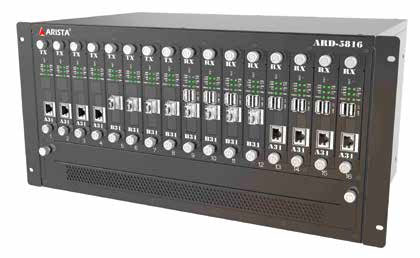A Compressed Tutorial on Networked AV


The implementation of video over IP has existed in our life for a considerable time now, and is present in content that we see every day—such as Netflix, e-learning, and countless other applications. The trend of replacing traditional AV infrastructures with IP-based infrastructures started gradually in the professional AV market over the last few years, and has been steadily growing in adoption. The concept of AV over IP is handled by decoders that package audiovisual data and transmit the packets over IP networks via Ethernet network switches. The decoder receives and unpacks the data packets to retrieve the audiovisual data.
DATA PACKAGING AND COMPRESSION
There are products on the market using industrial standards-based data packaging and compression algorithms, while others use proprietary packaging and compression algorithms. In general, standards-based data packaging and compression algorithms provide the potential for interoperability between products from different vendors. Standards-based products tend to have a roadmap and ecosystem that provides much greater infrastructure migration benefits than anything based on a single supplier. The H264/H265 and JPEG2000 protocols are very commonly used industrial standard data packaging and compression algorithms. SDVoE is another standard that is seeing greater adoption in the pro AV market. SDVoE is focused on video quality and image processing capability. It supports both upscaling and downscaling for resolutions up to true 4K60 4:4:4, with almost no latency (just ~30 microseconds of latency at 4K60Hz)—but it requires a 10Gbps Ethernet switch.
BANDWIDTH
An important topic to consider when implementing AV over IP is bandwidth. It is important to ensure that the IP network satisfies the requirements of the AV traffic. A raw 1080p60 stream with 24-bit color requires 1920x1080x60x24 = ~3 gigabits per second. 4K with the same parameters needs ~12 gigabits per second. A single stream with compression can be easily conveyed by an ordinary gigabit switch. Multiple streams can be simultaneously delivered from multiple sources to multiple displays through a single switch if the switch is a properly equipped and configured. The streams might be delivered via TCP/IP unicast or UDP/IP multicast. If the latter is used, then the IGMP functions of the switch must be properly configured. If IGMP is not configured properly, then each stream could potentially end up being delivered to all ports, resulting in a flooded network that will be unable to properly deliver the streams. If your applications require high-quality video with minimal latency, such as healthcare and government applications, then you will need to have a 10Gbps network. There are trade offs between video quality and bandwidth that must be considered when reviewing video quality requirements and existing IP network infrastructure.
Paul Shu is president of Arista Corporation.
A daily selection of features, industry news, and analysis for tech managers. Sign up below.
